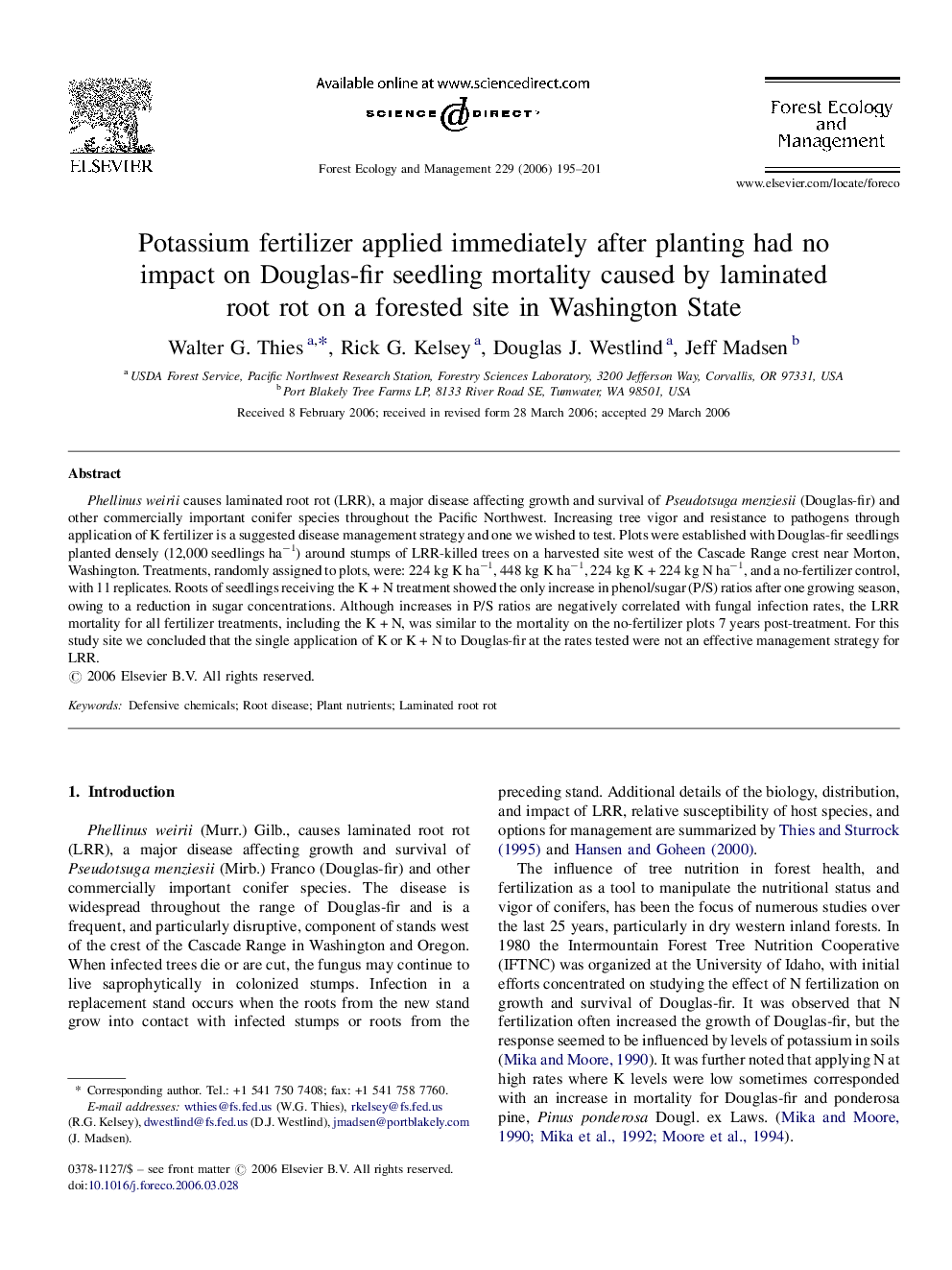| Article ID | Journal | Published Year | Pages | File Type |
|---|---|---|---|---|
| 90838 | Forest Ecology and Management | 2006 | 7 Pages |
Phellinus weirii causes laminated root rot (LRR), a major disease affecting growth and survival of Pseudotsuga menziesii (Douglas-fir) and other commercially important conifer species throughout the Pacific Northwest. Increasing tree vigor and resistance to pathogens through application of K fertilizer is a suggested disease management strategy and one we wished to test. Plots were established with Douglas-fir seedlings planted densely (12,000 seedlings ha−1) around stumps of LRR-killed trees on a harvested site west of the Cascade Range crest near Morton, Washington. Treatments, randomly assigned to plots, were: 224 kg K ha−1, 448 kg K ha−1, 224 kg K + 224 kg N ha−1, and a no-fertilizer control, with 11 replicates. Roots of seedlings receiving the K + N treatment showed the only increase in phenol/sugar (P/S) ratios after one growing season, owing to a reduction in sugar concentrations. Although increases in P/S ratios are negatively correlated with fungal infection rates, the LRR mortality for all fertilizer treatments, including the K + N, was similar to the mortality on the no-fertilizer plots 7 years post-treatment. For this study site we concluded that the single application of K or K + N to Douglas-fir at the rates tested were not an effective management strategy for LRR.
